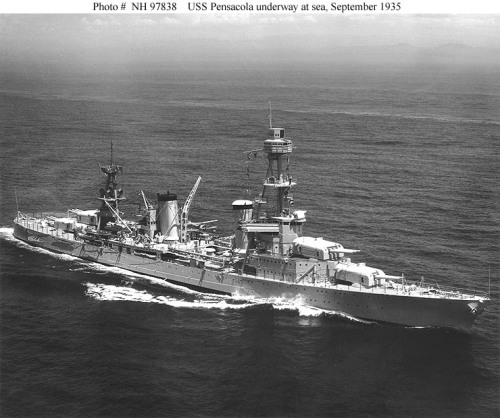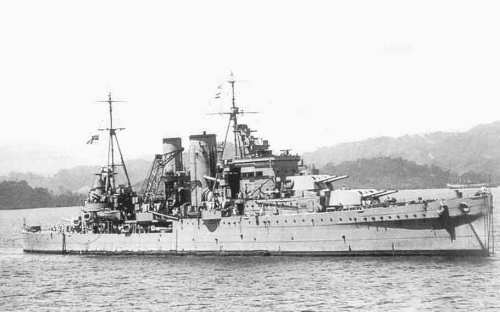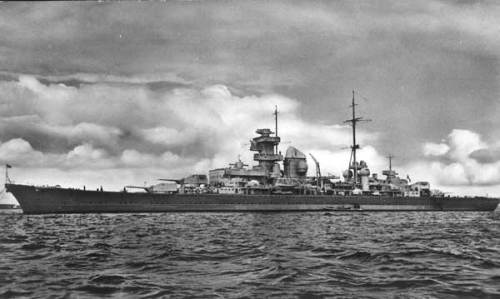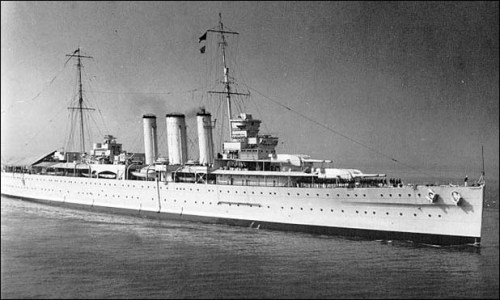Friends of Padre Steve’s World,
I was too tired last two nights to write anything. Thursday I had a long but good day at work and had to clean out much of my private email last night before I could do anything else because I was at over 90% of my email storage capacity. And it took forever to sort through it and get it down to almost 50%. Likewise, I did very little on social media. I finally caught up on my comics from the last couple of days and replied to some correspondence that I needed to do and began to work on this last night, but again found that I was too tired to complete it. So when it appeared that I wouldn’t complete it until after midnight I simply said “what the hell” and put it off until now.
This is another one of those posts to switch things up and write about a class of warships that I find fascinating, the World War II German Battlecruisers, Scharnhorst and Gneisenau. First and foremost I think that they were among the most beautiful capital ships ever built. That doesn’t mean that they didn’t have design flaws, or were superior to many other capital ships. Gneisenau’s career was cut short by Germany’s inability to protect her while in port, while Scharnhorst was the victim of an ill planned sortie under the command of an admiral who had no experience commanding large ships and who had only assumed command of her task force the day before. So if you are a Naval history or warship buff, enjoy.
Have a great day, stay inside and if you have to go out wear a mask and keep a safe distance from others to protect you and them.
Peace,
Padre Steve+
The naval architects of Germany in the early 1930s designed some of the most beautiful as well as deadly warships of the Second World War. Following Nazi Germany’s rejection of the provisions of the Treaty of Versailles the Kreigsmarine enacted building program to enlarge and modernize the German Navy.
Gneisenau refueling from Tanker Westerwald in July 1939
The first major units constructed were actually begun by the predecessor to the Kreigsmarine, the Reichsmarine of the Weimar Republic. These were the Deutschland class Armored Ships, Panzerschiffe, sometimes called “Pocket Battleships” and later during the war were reclassified as Heavy Cruisers. These ships were designed to replace the old pre-Dreadnaught battleships which Germany was allowed to retain following the Treaty of Versailles. The ships incorporated electric welds to reduce displacement, diesel engines for extended cruising range to enable them to serve as commerce raiders and a battery of six 11” guns. It was believed that as surface raiders their speed would allow them to avoid battle with all existing battleships except the three British Battlecruisers Hood, Renown, and Repulse, while being able to outgun any heavy or light cruiser they might encounter on such a mission. While they were an advance over anything in the German inventory they were outclassed by Hood, Renown and Repulse, as well as later French Dunkerque and Strasbourg.
The next and first truly capital ships built by the Kriegsmarine were the Scharnhorst and Gneisenau battleships which in reality were battle cruisers because of their light main battery of 11” guns as opposed to the 14”, 15” or 16” batteries of other nations battleships. The Hermans did. plan to rearm them with 15” guns but the war kept that from happening.
Despite the disparity in their main armament, their displacement and armor protection was comparable to other battleships of the era and their designed speed of 31.5 knots was superior to almost all other battleships of the era including the British King George V Class and the US North Carolina class. Only the British Hood was superior to them in speed. However, their speed came at a cost, they did not have the long cruising range to make them truly effective commerce raiders because they were propelled by steam turbines which consumed large amounts of fuel. Since the Germans did not have a fleet replenishment system like the U.S. Navy, nor the secure network of worldwide bases of the Royal Navy, they could only operate in the Northern Atlantic or Arctic for limited amounts of time. If damaged there were few safe harbors for them which had the capability of repairing them without them being exposed to allied bombers.
As built they displaced 31,000 toms, however at full combat load they both weighed in at nearly 38,000 tons and were 772 feet long. They had an armor belt that was nearly 14 inches thick. Armed with a main battery of nine 11” guns and a secondary armament of twelve 5.9 inch guns they also mounted a powerful for the time anti- aircraft battery of fourteen 4.1 inch guns, 16 37mm and 16 20mm anti-aircraft cannons. Additionally they mounted six 21” torpedo tubes and carried three Arado 196 A3 scout planes. The main battery was eventually to be replaced by six 15” guns but this never occurred although Gneisenau was taken in hand after being damaged in Operation Cerberus to mount the new weapons but the conversion was never completed.
 Scharnhorst in Action Against HMS Glorious
Scharnhorst in Action Against HMS Glorious
Scharnhorst was laid down on 15 June 1935 and launched 3 October 1936. She was commissioned 7 January 1939. Her sister Gneisenau was laid down 6 May 1935, launched 8 December 1936 and commissioned 21 May 1938. Upon the commencement of the Second World War the two sisters began a reign of destruction on British shipping in the North Atlantic. On 23 November 1939 they sank the Armed Merchant Cruiser HMS Rawalpindi while on patrol near the Faroe Islands.
During Operation Weserübung the pair surprised sank the aircraft carrier HMS Glorious and her two escorting destroyers HMS Ardent and Acasta on 7 June 1940. It was the only time a Fleet carrier was caught and sunk by battleships during the war. However, Scharnhorst was hit by a torpedo from Acasta which led to her being withdrawn to Trondheim, for temporary repairs before retiring to Kiel for permanent repairs.
Scharnhorst during Operation Berlin and being Refueled during the Operation
From January to March 1941 they conducted Operation Berlin under the command of Admiral Gunther Lütjens against British merchant shipping in the North Atlantic sinking 22 ships before returning to base. During the action the task force encountered the British Battleships HMS Ramillies and HMS Malaya escorting different convoys which Lütjens refused to engage. After sinking ships from another convoy they encountered HMS King George V and HMS Rodney which they escaped using their superior speed, but by now, Lütjens realize that the danger of continuing the outweighed the potential success and headed for repairs in the port Brest, in occupied France.
While in Brest Scharnhorst needed repairs to a superheater for her boilers, while Gneisenau was damaged during a British air raid and were unable to deploy with Bismarck and Prinz Eugen for Operation Rheinübung, during which Bismarck sank HMS Hood, but was damaged by a 14” shell from HMS Prince of Wales which cut the fuel line from the ship’s forward fuel tanks. Lütjens decided to cut the mission short and escape to Brest, but was damaged by an aerial torpedo from a Swordfish torpedo bomber flying from HMS Ark Royal which wrecked her steering gear and allowed HMS King George V, HMS Rodney, as well as cruisers and destroyers to catch and sink her on May 27th. Prinz Eugen returned safely to Brest to join the Battlecruisers.
The Channel Dash Seen from Prinz Eugen above and below

Admiral Cilliax Addressing the Crew of Scharnhorst at Kiel
While at Brest Gneisenau was again bombed and torpedoed requiring extensive repairs. Due to the exposed location of the port, the German high command decided to return the ships to Germany along with the Heavy Cruiser Prinz Eugen. Commanded by Vice Admiral Otto Ciliax, Operation Cerberus took place from 11-13 February 1942. It involved the Battlecruisers and Prinz Eugen, accompanied by destroyers, E-Boats, and R-Boats. The force was protected heavy Luftwaffe fighter cover, Code named Operation Donnerkeil the air operation was commanded by the legendary Luftwaffe fighter ace, General Adolf Galland.
The dash up the English Channel, was unsuccessfully contested by the Royal Air Force and Royal Navy. The German ships successfully broke through the Channel in broad daylight and protected itself from being damaged by aircraft, motor torpedo boats, destroyers, and shore batteries. Once clear of the channel and headed for home both Scharnhorst and Gneisenau struck mines which caused various amounts of damage, but both got through to Kiel.
The success of the daylight passage through the English Channel shocked and infuriated the British public. The Times of London published an editorial on 14 February which fumed:
Vice Admiral Ciliax has succeeded where the Duke of Medina Sidonia failed. Nothing more mortifying to the pride of our sea-power has happened since the seventeenth century. […] It spelled the end of the Royal Navy legend that in wartime no enemy battle fleet could pass through what we proudly call the English Channel.
Despite the fact that then Operation was successful, the high command of the German Navy Their breakthrough was an embarrassment to the Royal Navy and Royal Air Force. The high Command of the German Navy considered it a tactical victory but a strategic defeat, for it had traded a base, albeit exposed from which it could conduct offensive operations, to the defense of Norway, a mission of dubious value at best.
Gneisenau after being Bombed in Floating Dry Dock
While undergoing repairs in a floating dry dock at Kiel Gneisenau was heavily damaged by the Royal Air Force on the night of 26-27 February. The damage was such that the Kriegsmarine High Command decided to elongate her damaged bow section and rearmament to replace her main battery with 15” guns. Once seaworthy she steamed to the port of Gotenhafen for full repairs and rearmament. Although some work was completed the conversion was halted by Hitler who was infuriated by the failure of a German Task Force at the Battle of the Barents Sea, 30-31 December 1942. Hitler fired Grand Admiral Erich Raeder, and and gave an order to scrap what remained of the German surface fleet and concentrate on the U-Boat war. Admiral Karl Donitz prevented the scrapping of the fleet, but most ships were laid up and their crews reassigned to provide crews for U-Boats. Gneisenau was disarmed with her 11” and twin 5.9” removed and installed along the Atlantic Wall. One triple 11” turret, either Bruno or Dora was installed as part of a coastal defense battery in Norway. The battery was taken over by the Norwegians after liberation and remained in commission as Austrått Fort until 1968. Since then it has become a well preserved museum.
When the Red Army approached Gotenhafen her remaining crew moved her to the harbor entrance and sank her as a block ship on 27 March 1945. Following the war she was raised by the Poles and scrapped in 1951.
Turret of Gneisenau at Austrått Fort Norway
Scharnhorst was repaired following Operation Cerberes and in March 1943 was transferred to Norway where along with Tirpitz, Admiral Scheer, Lutzow (the former Deutschland), Admiral Hipper and Prinz Eugen she became part of a “fleet in being” poised to strike the Allied convoys bound for Russia. On Christmas Day 1943 under the command of Rear Admiral Erich Bey the Scharnhorst set sail with several destroyers undertook Operation Ostfront and the ensuing battle became known as the Battle of North Cape. The mission was an attack on two Russia bound convoys. But the orders were intercepted and decoded by the British. Admiral Bruce Fraser planned a trap to intercept and neutralize Scharnhorst.
Once Scharnhorst sailed the battleship HMS Duke of York, four cruisers and a number of destroyers as she closed on the convoy. However, due to the sea conditions Bey detached his escorting destroyers and ordered them to return to port. Duke of York and her supporting cruisers and destroyers engaged Scharnhorst. Bey now realized he had no chance of destroying the convoy and attempted to escape. However, Scharnhorst was damaged and her speed and maneuvering capabilities impaired. Now virtually defenseless and surrounded the great ship was sunk with the loss of all but 36 of her 1968 man crew. Her wreck was discovered 3 October 2000 some 70 miles north of North Cape Norway.

Sinking of Scharnhorst by Charles Turner ( c) National Maritime Museum; Supplied by The Public Catalogue Foundation
Survivors of Scharnhorst debark in England
Thus ended the careers of two of the most beautiful battleships ships to grace the seas. Though their careers were short they both survived frequent heavy battle damage to return and fight again. Perhaps their greatest weakness was the inability of the German Navy to provide them adequate escorts at sea, and the inability of the Luftwaffe to protect them against air strikes while in port. But ultimately their great weakness was the poor naval strategy employed by Hitler and Raeder at the beginning of the war which ensured their destruction. Of the major German surface units only the Pocket Battleships we’re capable of long range commerce raiding operations. The short range of the other heavy German ships, their reliance on steam turbines rather than Diesel engines, lack of air and surface support at sea, and secure overseas bases that that could operate doomed all of them to failure, and resulted in the deaths of far too many brave sailors, fighting for their country in an unrighteousness and evil cause.
















 USS Pensacola
USS Pensacola HMS Exeter
HMS Exeter USS Houston with President Roosevelt Aboard
USS Houston with President Roosevelt Aboard Prinz Eugen
Prinz Eugen HMS Suffolk
HMS Suffolk USS San Fransisco Returning After the Naval Battle of Guadalcanal
USS San Fransisco Returning After the Naval Battle of Guadalcanal